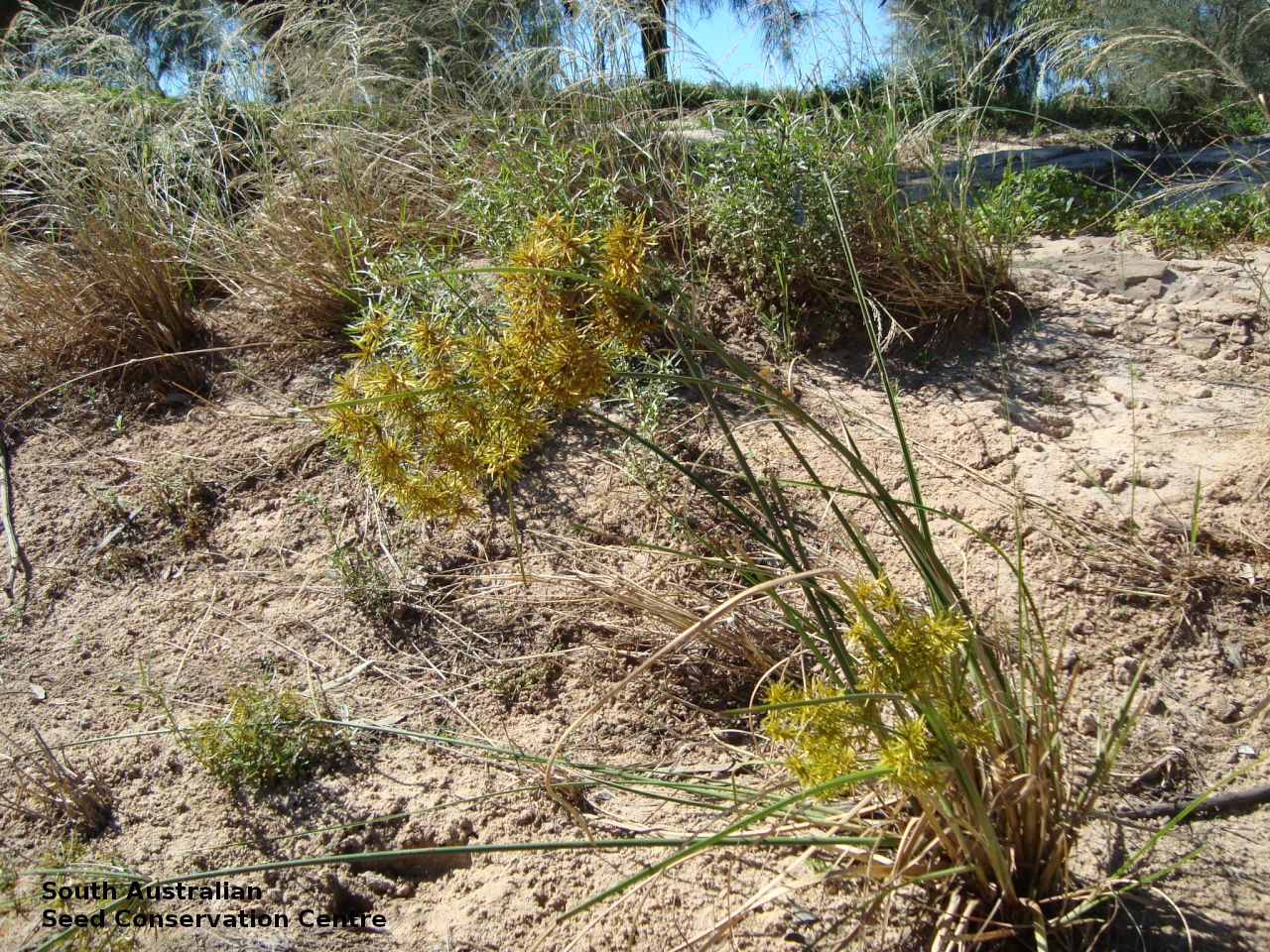








Botanical art
Prior names
Cyperus clelandii
Common names
Finger Flat-sedge
Etymology
Cyperus from the Latin 'cyperos' and derived from the Greek 'kypeiros', an ancient Greek name used by Homer and Theophrastus for several plants of this genus. Dactylotes from the Greek 'dactylos' meaning finger.
Distribution and status
Found scattered in north-east South Australia growing in seasonally wet situations such as stream banks and floodplains. Also found in Western Australia, Northern Territory, Queensland and New South Wales. Native. Rare in South Australia. Common in the other States.
Herbarium regions: Lake Eyre, Gairdner-Torrens
AVH map: SA distribution map (external link)
Plant description
Densely tufted, erect perennial sedge to 100 cm high. Stems relatively slender, though up to 5 mm thick; obtusely trigonous, finely striate, smooth. Leaves narrow, mostly complicate (infolded in half), more or less distinctly septate-nodulose, more than half as long as the stems; involucral bracts 2-5, most of them longer or much longer than the inflorescence and similar in appearance to the leaves. Flower-spike an umbel compound or not; spreading, with several to numerous slender rays to 14 cm long; secondary rays well-developed; spikelets digitate or subdigitate, numerous in each cluster; linear, acute, rich-yellow or becoming paler and dull, 5-15 mm long, 1.2-2 mm wide, usually 10-40-flowered; rhachilla slender, almost unwinged; glumes short, rather distant and soon spreading; the margins then more or less involute, very obtuse and mucronate in profile, keeled and several-nerved, c. 1.5-2.1 mm long; stamens 3; style 3-branched. Flowers in spring and summer. Fruits are flat, pale yellow fruit-head in dense clusters. Seeds are brown oblong-triangular seed to 1.5 mm long and 0.5 mm wide with fine reticulate surface covered with a thin shiny transparent layer. Seed embryo type is capitate.
Seed collection and propagation
Collect seeds between January and December. Collect fruits by picking off the mature heads, those turning an pale yellow colour that come-off easily. Place the heads in a tray and leave to dry for one to two weeks. Then rub the heads with a rubber bung to dislodge the seeds. Use a sieve to separate any unwanted material. Store the seeds with a desiccant such as dried silica beads or dry rice, in an air tight container in a cool and dry place. From three collections, the seed viability was low to high, ranging from 40% to 85%.
| Location | No. of seeds (weight grams) | Number of plants | Date collected | Collection number Collection location | Date stored | % Viability | Storage temperature |
|---|---|---|---|---|---|---|---|
| BGA MSB | 40,000 (2.82 g) 40,000 (2.82 g) | 20 | 24-Oct-2007 | DJD920 Lake Eyre | 19-Sep-2008 | 40% | +5°C, -18°C |
| BGA MSB | 57,000 (10.4 g) 57,000 (10.4 g) | 20 | 11-May-2008 | RJB77890 Lake Eyre | 19-Sep-2008 | 55% | -18°C |
| BGA | 162,000 (17.26 g) | 50 | 11-Aug-2010 | DJD1826 Lake Eyre | 1-Jan-2012 | 85% | -18°C |
Number of plants: This is the number of plants from which the seeds were collected.
Collection location: The Herbarium of South Australia's region name.
% Viability: Percentage of filled healthy seeds determined by a cut test or x-ray.